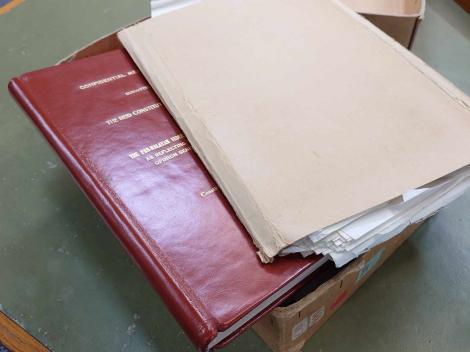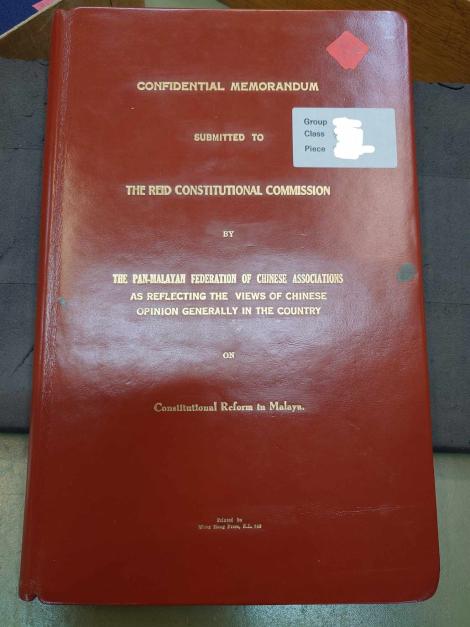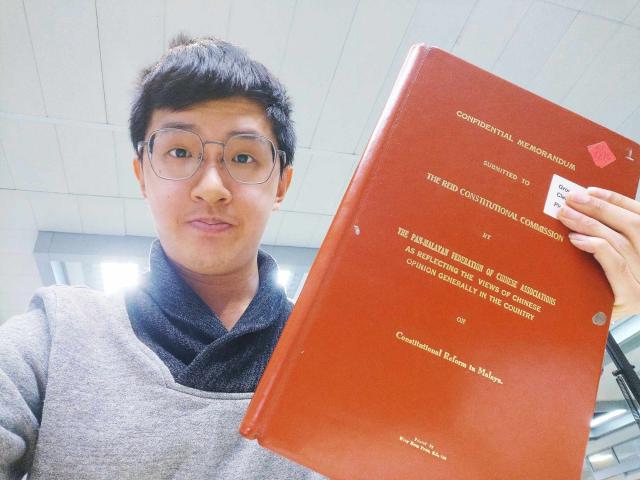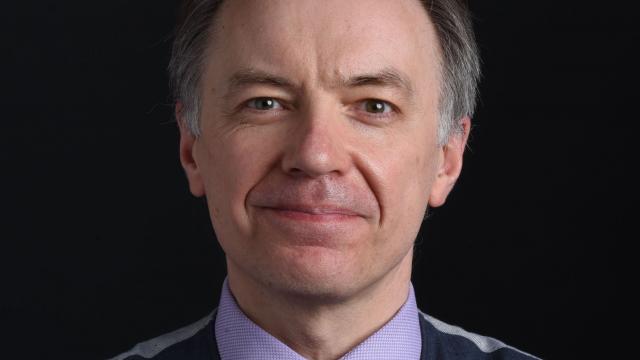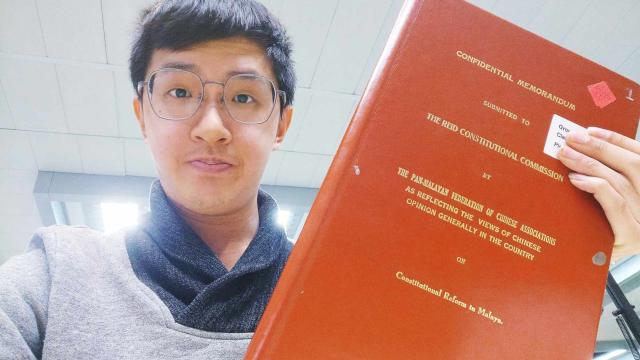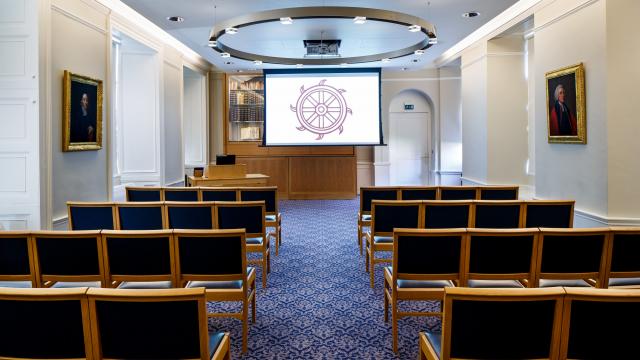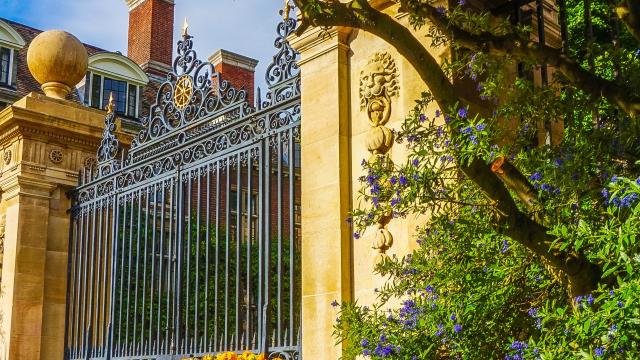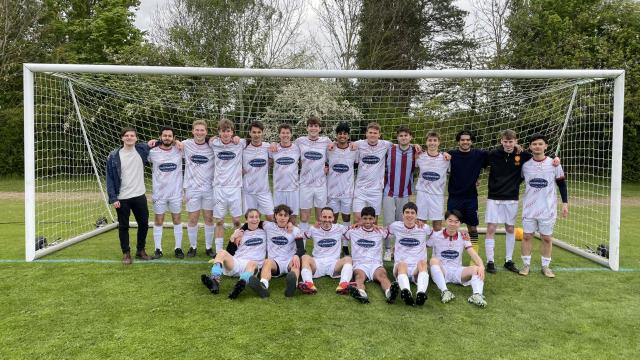
Research by a St Catharine’s postgraduate student has debunked a longstanding myth about the birth of an independent Malaya. Chee Yong Tan, a Development Studies PhD student, was working on his thesis in the UK’s National Archives when he discovered a document that challenged what he and many other Malaysians believed about a major participant in Malaya’s journey to independence, Tan Tong Hye (known as Tan T. H.).
Timeline: The making of a myth
March 1956: Queen Elizabeth II and Malay rulers appointed a commission (known as the Reid Commission) to draft an independence constitution for the Federation of Malaya (which became Malaysia in 1963). The Reid Commission was tasked with gathering views from different parts of Malayan society on their future constitutional rights. One of the five members of the Reid Commission was St Catharine’s alumnus Sir Ivor Jennings (1922, Law; Honorary Fellow 1950).
April 1956: More than a thousand representatives from Chinese clans and associations from across the Federation of Malaya came together in a national convention to discuss the rights of the Chinese community after independence. The convention’s demands were recorded in a memorandum written in both English and Mandarin for consideration by the Reid Commission.
July 1957: After its passage through the Parliament of the United Kingdom, the Federation of Malaya Act received Royal Assent on 31 July. Only one of the demands from the memorandum – the granting of automatic citizenship to all local-born Malayans after independence – was partially met by the new constitution.
August 1957: The independence of the Federation of Malaya was officially proclaimed on 31 August by St Catharine’s alumnus Tunku Abdul Rahman (1922, Law; Honorary Fellow 1960), the country’s first Prime Minister.
The myth
For the last six decades, Tan T. H. was thought to have thrown the memorandum into a dustbin during a visit to London to negotiate independence for Malaya. He was a leading politician who served as Executive Secretary of the Malayan Chinese Association and Secretary of the Alliance, the political coalition led by Tunku Abdul Rahman.
Chee Yong was born and grew up in Malaysia, and encountered the myth when he was a child:
“This story has been reproduced and recirculated by generation after generation, and the act of throwing the memorandum in the bin has been seen as evidence of Tan T.H. ‘selling out’ the Chinese community or even treason. I remember first being told the story by an elderly gentleman when I was still in primary school, when it was laden with resentfulness and emotion. I believed what I was told without any doubt.”
The discovery
The UK’s National Archives has a collection of over 131 memorandums submitted to the Reid Commission, which Chee Yong was reading through to inform his ongoing PhD research:
“I never set out to discover the memorandum! I was looking for historical documents that could shed light on the late colonial period in Malaya as part of my PhD research. As I was working through the National Archive’s collection, I suddenly realised that I held in my hands the original copy of the memorandum that Malaysians believed Tan T. H. had disposed of decades ago. The original includes a compelling array of thousands of signatures and stamps from the Chinese representatives who participated in the convention. To dispel any lingering doubt about its authenticity, the accompanying archival materials state definitively that the memorandum was received and considered by the Reid Commission."
“In hindsight, the story that we were told should not have been such a convincing myth. Tan T. H. only travelled to London twice as part of the Alliance’s missions headed by Tunku Abdul Rahman, and both trips occurred before the memorandum was even drafted. How could he possibly throw the memorandum into a bin in London if such a document didn’t exist yet? I wonder how we let a myth obscure the truth: British powers-that-be had other considerations during decolonisation, and were simply not interested in meeting all of the memorandum’s demands.”
Looking ahead
There has been significant interest in Chee Yong’s discovery from some Malaysian media after he shared his initial findings on social media.
“This is widely regarded as a meaningful moment for the Chinese community in Malaysia not only because it debunks an insidious myth and allows us to fill an important gap in our journey to independence. I am proud to have made a small contribution to our understanding of the history of Malaysia.
“This has also been an important moment for me as a researcher and I will be citing the memorandum in the conclusion of my PhD thesis. The flourishing of the myth over many decades reminds us that historical myths – for good and for bad – can be mobilised as an instrument of power and strategically reproduced to appeal to specific communities. Moreover, it reminds us that we are still living with the consequences of racialisation under colonial rule.”
Chee Yong’s PhD is jointly funded by the Cambridge Trust, the Malaysian Commonwealth Studies Centre and the St Catharine's Tunku Abdul Rahman Fund. The Fund was established in 2003 by the Government of Malaysia and St Catharine’s to commemorate the 100th anniversary of the birth of Tunku Abdul Rahman. Since its launch, it has provided scholarships for MPhil and PhD students in the humanities and social sciences, and supported the development of Malay World Studies at the University of Cambridge and beyond.
Dr Liana Chua (2021), Fellow at St Catharine’s and Director of the Tunku Abdul Rahman Fund, added:
“Chee Yong’s discovery is a terrific example of the sort of ground-breaking research that the Tunku Fund has supported over the past twenty years. We hope that potential Tunku applicants will draw inspiration from his and our other scholars’ work and look forward to seeing what new research emerges in the coming years.”
